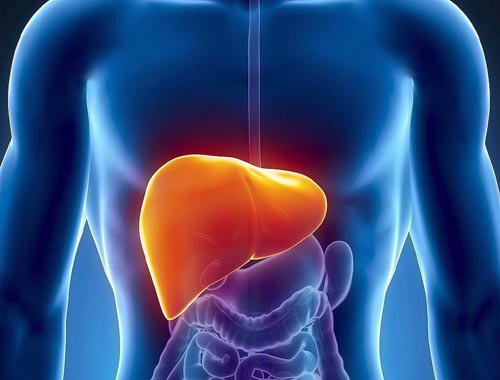Primary Biliary Cirrhosis

Published: 18 Jun 2025
ICD9: 571.6 ICD10: K74.3 ICD11: DB93.2
Primary biliary cirrhosis (PBC) is a chronic, progressive autoimmune disease of the liver.
It primarily affects the small bile ducts within the liver, leading to their inflammation and destruction. This damage obstructs the flow of bile, causing it to back up into the liver. Over time, this bile buildup damages liver cells, leading to scarring (fibrosis), and eventually cirrhosis.
Here's a breakdown of the key aspects:
![]() Autoimmune: The body's immune system mistakenly attacks its own cells, specifically the cells lining the bile ducts in the liver. The exact trigger for this autoimmune response is unknown.
Autoimmune: The body's immune system mistakenly attacks its own cells, specifically the cells lining the bile ducts in the liver. The exact trigger for this autoimmune response is unknown.
![]() Chronic and Progressive: PBC is a long-term condition that typically worsens over time. However, with early diagnosis and treatment, its progression can often be slowed or even halted.
Chronic and Progressive: PBC is a long-term condition that typically worsens over time. However, with early diagnosis and treatment, its progression can often be slowed or even halted.
![]() Bile Ducts: The small bile ducts within the liver are the primary target. These ducts are responsible for carrying bile (a digestive fluid produced by the liver) to the gallbladder and then to the small intestine, where it aids in the digestion and absorption of fats and fat-soluble vitamins.
Bile Ducts: The small bile ducts within the liver are the primary target. These ducts are responsible for carrying bile (a digestive fluid produced by the liver) to the gallbladder and then to the small intestine, where it aids in the digestion and absorption of fats and fat-soluble vitamins.
![]() Bile Buildup (Cholestasis): As the bile ducts are damaged and obstructed, bile cannot flow properly. This leads to a buildup of bile acids and other substances in the liver, causing further damage.
Bile Buildup (Cholestasis): As the bile ducts are damaged and obstructed, bile cannot flow properly. This leads to a buildup of bile acids and other substances in the liver, causing further damage.
![]() Cirrhosis: Over time, the chronic inflammation and bile buildup lead to scarring of the liver tissue, a process known as fibrosis. Eventually, this can progress to cirrhosis, where the liver is severely scarred and can no longer function properly.
Cirrhosis: Over time, the chronic inflammation and bile buildup lead to scarring of the liver tissue, a process known as fibrosis. Eventually, this can progress to cirrhosis, where the liver is severely scarred and can no longer function properly.
Key Symptoms:
Many people with PBC have no symptoms, especially in the early stages. When symptoms do appear, they can include:
![]() Fatigue
Fatigue
![]() Itching (pruritus)
Itching (pruritus)
![]() Dry eyes and mouth
Dry eyes and mouth
![]() Jaundice (yellowing of the skin and eyes)
Jaundice (yellowing of the skin and eyes)
![]() Abdominal pain
Abdominal pain
![]() Dark urine
Dark urine
![]() Pale stools
Pale stools
![]() Swelling in the legs and feet (edema)
Swelling in the legs and feet (edema)
![]() Increased cholesterol levels
Increased cholesterol levels
![]() Bone pain or osteoporosis
Bone pain or osteoporosis
Diagnosis:
PBC is typically diagnosed through a combination of:
![]() Blood Tests: Elevated levels of liver enzymes (such as alkaline phosphatase) and the presence of anti-mitochondrial antibodies (AMA) are highly suggestive of PBC.
Blood Tests: Elevated levels of liver enzymes (such as alkaline phosphatase) and the presence of anti-mitochondrial antibodies (AMA) are highly suggestive of PBC.
![]() Liver Biopsy: A small sample of liver tissue is taken and examined under a microscope to confirm the diagnosis and assess the extent of liver damage.
Liver Biopsy: A small sample of liver tissue is taken and examined under a microscope to confirm the diagnosis and assess the extent of liver damage.
![]() Imaging Tests: Ultrasound, CT scan, or MRI may be used to visualize the liver and bile ducts and rule out other conditions.
Imaging Tests: Ultrasound, CT scan, or MRI may be used to visualize the liver and bile ducts and rule out other conditions.
Treatment:
There is no cure for PBC, but treatment can help slow the progression of the disease and manage symptoms. The main treatments include:
![]() Ursodeoxycholic Acid (UDCA): This medication helps improve bile flow and protect liver cells from damage. It is the primary treatment for PBC.
Ursodeoxycholic Acid (UDCA): This medication helps improve bile flow and protect liver cells from damage. It is the primary treatment for PBC.
![]() Obeticholic Acid (OCA): This medication may be used in combination with UDCA or alone in some cases.
Obeticholic Acid (OCA): This medication may be used in combination with UDCA or alone in some cases.
![]() Other Medications: Medications to relieve itching, dry eyes, and other symptoms.
Other Medications: Medications to relieve itching, dry eyes, and other symptoms.
![]() Liver Transplant: In advanced cases of cirrhosis, a liver transplant may be necessary.
Liver Transplant: In advanced cases of cirrhosis, a liver transplant may be necessary.
Prognosis:
The prognosis for people with PBC varies. With early diagnosis and treatment, many people can live normal lives for many years. However, without treatment, PBC can eventually lead to liver failure.
Important Note: This information is for general knowledge and should not be considered medical advice. If you have concerns about your liver health, please consult with a qualified healthcare professional. They can provide an accurate diagnosis and recommend the best course of treatment for your individual needs.